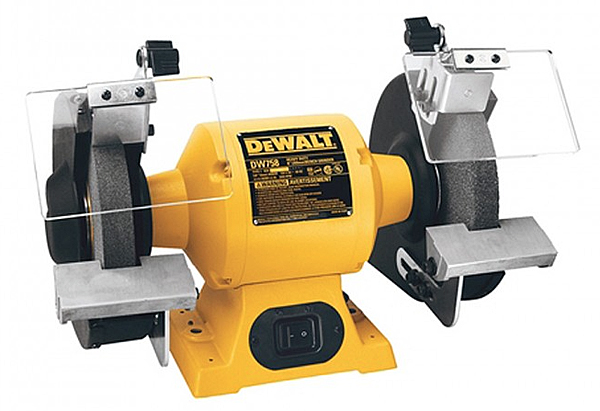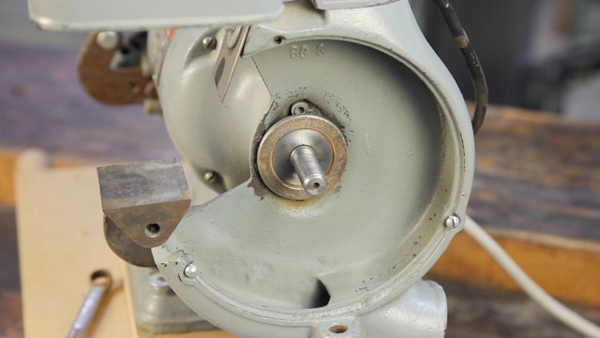
I have two bench grinders in my shop, one set up for wood, the other for machine work. I have changed wheels and balanced them, that is not a problem. Vibration is at a minimum, but not being able to tighten the nuts on the wheels sufficiently is nerve-wracking. I have tried holding the wheel and tightening the nut by hand, then jamming a block behind the wheel to hold it and some other steps that I should not have tried (but did anyway). When it feels that the nut is tight enough, I stop and do the other side. On occasion, this has led to the first side coming loose, and I have to go back and try again. The grinders are 8-inch, one high-speed, the other slow-speed. I use the slow-speed one for my lathe chisels. Both machines have done the same thing: the nuts come loose while using the grinder. I am at a loss as to what I can do to correct this problem. I am sure it’s a simple fix, but I cannot figure it out. – John P. Cich
Ernie Conover: Any grinder or buffer has a left-hand thread on the left arbor and a right-hand on the right. This is so that the inertia of the wheels, flanges and nuts will tighten the system on startup and not vice versa. Your problem is an economy grinder. Traditionally even a workshop grinder, such as the classic 1960s vintage Delta in the photo, had a cross-pin through the shaft which fits into a like recess in the flange. You cannot see the pin in this photo, but if you were to turn the flange the shaft would turn with it. Once you install the wheel and the second flange, all that is necessary is to snug up the nut with a wrench—while holding the wheel with two fingers. There is enough friction between the inner flange and the wheel to make this happen. We do not want the nut to be more than a little more than hand tight or damage to the wheel could result. Also, the system is self-tightening.
Today, most grinders eliminate this nicety. Both flanges are free to spin on the shaft. The solution is to bring the nut up tight, back it off about 1/8th turn, hold the wheel and snap the wrench to bring the nut home with some force. If you can hold the other wheel and the wheel you replaced will not spin on the shaft, you have done your work.
Chris Marshall: It’s an annoying problem, John. The manual that comes with my DeWALT bench grinder suggests that you can put a wrench on both nuts at the ends of the motor spindle that hold the wheels in place, then hold one stationary while manipulating the other one loose or tight. That only works if one of the nuts is good and tight to start with, because tightening one side will often loosen the other. I do as you do: I jamb a block of wood between the rim of the grinding wheel and the guard and snug the nut up that way, working on one wheel at a time. The “two wrench” method doesn’t work well at all.






